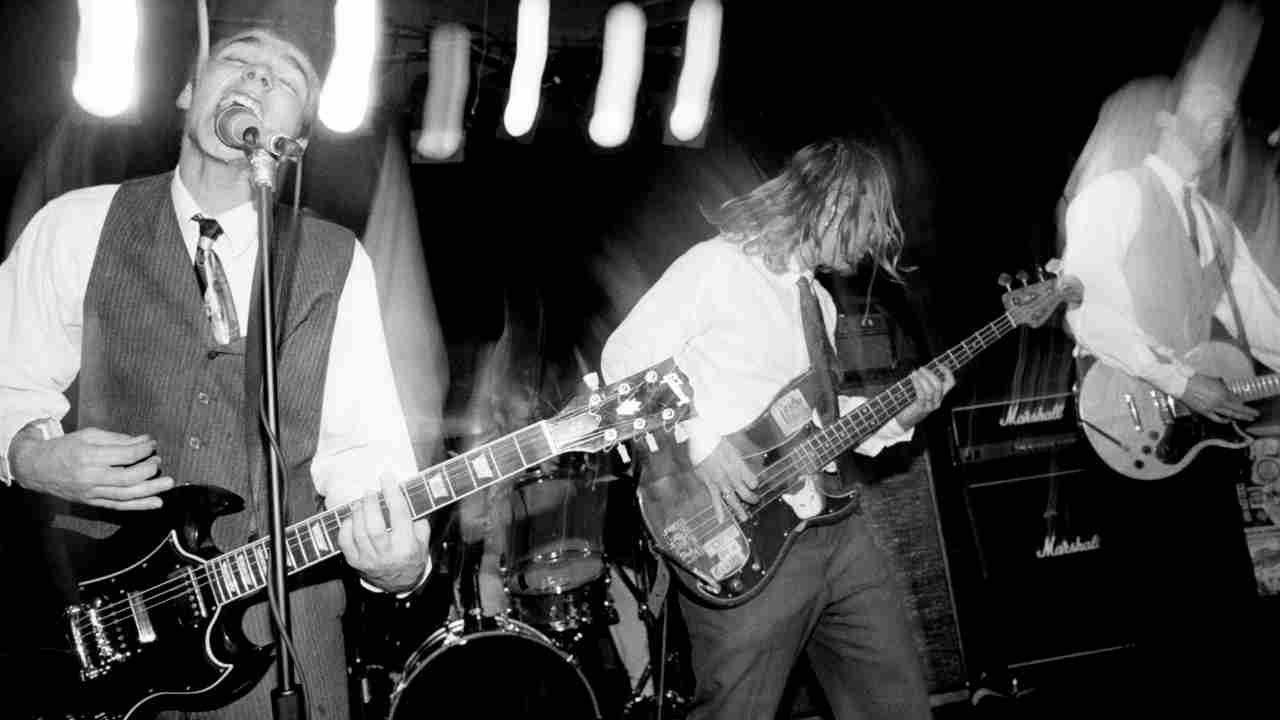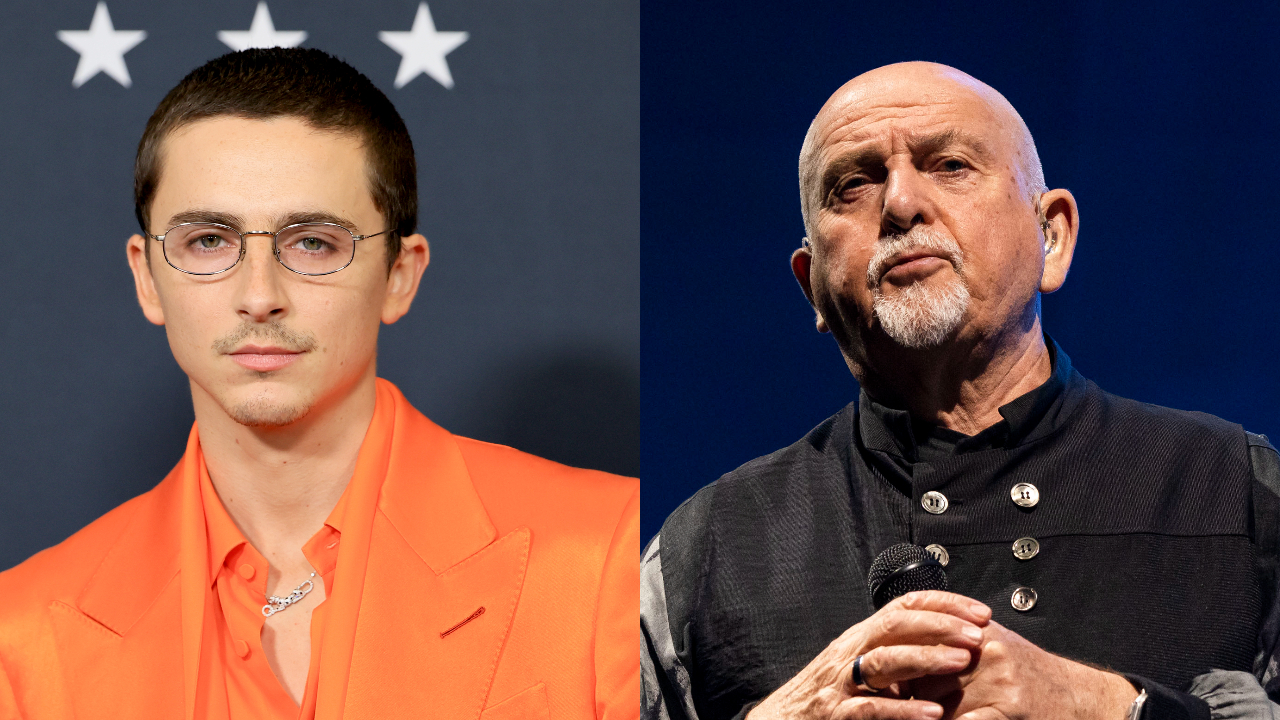“We were very aware of creating something that didn’t sound exactly like anybody else. Now, of course, it sounds like everyone else”: This cult Seattle band helped invent 90s emo. Then Dave Grohl poached two of their members for Foo Fighters
Seattle was the home of grunge, but 90s emo pioneers Sunny Day Real Estate offered something grander.

The story of Sunny Day Real Estate is one of serendipity and missed opportunities. In 1992, guitarist/singer Dan Hoerner, drummer William Goldsmith and bassist Nate Mendel were members of Seattle band Empty Set.
When Mendel’s services were required in Europe for one of his other bands, the remaining pair lucked out when they invited 18-year-old high-schooler Jeremy Enigk to jam with them. Quickly realising the talent they had unearthed, the trio soon became a quartet, changing their name and sound, and installing the precocious Enigk as their new frontman.
It took the newly christened Sunny Day Real Estate just two shows to get signed by Sub Pop, the influential Seattle label who had released early records by Nirvana, Mudhoney Soundgarden and others. Sub Pop co-founder Jonathan Poneman had seen Sunny Day Real Estate play a support slot at local club the Crocodile Café and was blown away.
“The thing that was so emotionally engaging about the music was that the songs were so beautiful and evocative,” Poneman later recalled. “It was a riveting experience.”
That effect was captured in all its nebulous glory on the band’s totemic debut album, Diary, released to critical acclaim on May 10, 1994. At odds with still omnipotent grunge scene, it knitted together quiet/loud dynamics, ethereal vocals, abstract lyrics, and refined hardcore edges. Combined with Chris Thompson’s disquieting artwork, the band’s refusal to do any press (except for a single interview with British journalist Everett True) and their decision to issue just only one publicity photo only added to their mystique.

“It was like having magical powers, like a weird alchemy,” Enigk told Paste, reflecting on the record’s legacy 30 years later. “We felt like wizards; or I did, anyway.”
Despite rock radio support for singles In Circles and Seven, the album failed to chart, and by the end of the year, frictions were rife. Enigk found God as the band wrapped up
the sessions for their second album in Spring 1995. They submitted recordings to Sub Pop without a title and a semi-serious suggestion to make the cover art pink. By the time the album – officially self-titled but unofficially known as LP2 or ‘The Pink Album’ – was released in November 1995, Sunny Day Real Estate had already disintegrated.
The latest news, features and interviews direct to your inbox, from the global home of alternative music.
No less beguiling in hindsight than its predecessor, LP2 captures a band on the brink of their imminent implosion, wrestling with lo-fi experimentation and pushing ambiguity to whole new levels. It was only in subsequent years that the influence and impact Sunny Day Real Estate made with their first two records would become evident.
After the band split, Nate Mendel and William Goldsmith signed up to the newly formed Foo Fighters, though only the former stayed the course. Jeremy Enigk went solo and Dan Hoerner moved to the countryside. When Sub Pop enquired about releasing a posthumous rarities compilation in 1997, the band members began excavating hidden gems, but instead found relations had thawed to the point of giving things a fresh go.
The result was 1998’s excellent third album, How It Feels To Be Something On, on which Sunny Day Real Estate emerged as a band reborn (albeit without the otherwise engaged Mendel, replaced on record by Jeff Palmer, before Joe Skyward joined the ranks). Songs were grandiose and almost prog-like yet retained the alluring obtusity now firmly established as their signature.
After a live release fulfilled the obligations to Sub Pop, a polished, comparatively underwhelming fourth album, The Rising Tide, arrived in 2000. When new label Time Bomb Recordings went bust and funds fell through, the band split a second time.
Side projects, lone ventures, second, third, and fourth reunions have all followed since then. In 2014, new song Lipton Witch was released as part of a Record Store Day split 7” with Circa Survive, the last remnant from an abandoned attempt at recording a fifth album at Dave Grohl’s Studio 606 four years prior.
In their absence, countless acts have cited Sunny Day Real Estate as an influential touchstone. Many of the bands on the bills of US festivals Riot Fest and When We Were Young undoubtedly owe much to their imprint. Although SDRE’s legend has grown with the years, the stars have never quite aligned again like they did on that initial sprint.
Emo itself has gone in and out of favour over the course of their on/off career. Despite recoiling at the ‘emo’ label even at the time, in recent years the band members seem to have come around to a place of acceptance and pride about the part they’ve played in pushing alternative music forward.
“We were very aware of creating something that didn’t sound exactly like anybody else,” Hoerner remarked in a 2022 interview with Spin magazine. “Now, of course, it sounds like everyone else.”
The band reunited in 2022 and have played consistently since. although there has yet to be a new album. But to this day, Diary remains among Sub Pop’s best-selling releases, while its DNA - and that of LP2 – is seeded in countless bands that have followed them. Sunny Day Real Estate may never have had the sales of some of their contemporaries, but their influence continues to run deep.
Formerly the Senior Editor of Rock Sound magazine and Senior Associate Editor at Kerrang!, Northern Ireland-born David McLaughlin is an award-winning writer and journalist with almost two decades of print and digital experience across regional and national media.
You must confirm your public display name before commenting
Please logout and then login again, you will then be prompted to enter your display name.
